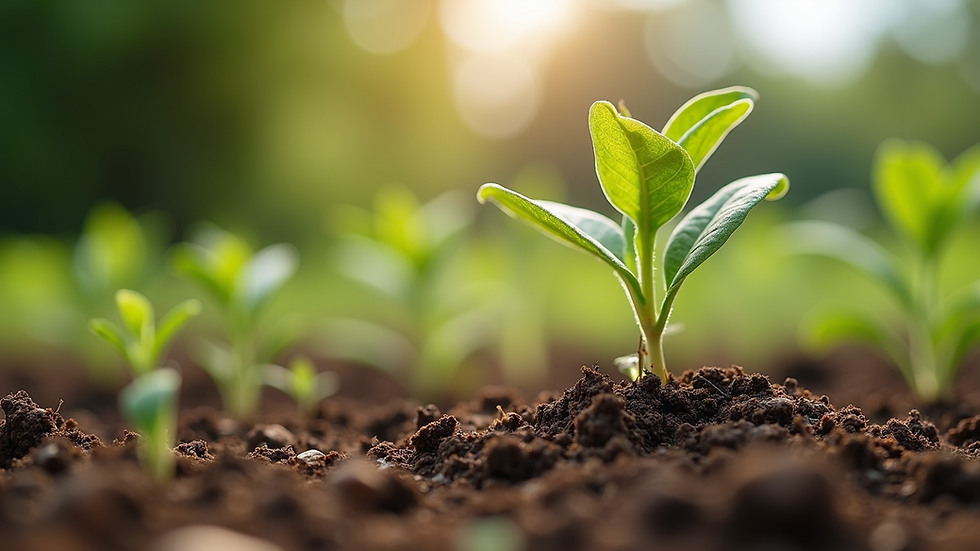Designing Water-Efficient Landscapes for Modern Living
- Christopher Gentile
- Sep 28
- 3 min read
Creating a beautiful outdoor space that conserves water is more important than ever. With changing climates and increasing water restrictions, designing landscapes that use water wisely is essential. This guide explores practical ways to build stunning, sustainable gardens that thrive while saving water. Whether you have a small yard or a large property, these water-saving landscape solutions will help you make smart choices for your environment and your wallet.
Understanding Water-Saving Landscape Solutions
Water-saving landscape solutions focus on reducing water use without sacrificing the beauty or functionality of your outdoor space. These strategies include selecting drought-tolerant plants, improving soil health, and using efficient irrigation systems. By implementing these solutions, you can create a landscape that requires less maintenance and lowers your water bills.
Some effective water-saving landscape solutions include:
Plant selection: Choose native or drought-resistant plants that need less water.
Soil improvement: Add organic matter to improve water retention.
Mulching: Use mulch to reduce evaporation and keep soil moist.
Efficient irrigation: Install drip irrigation or smart controllers to water only when necessary.
Zoning: Group plants with similar water needs together to avoid overwatering.
These techniques not only conserve water but also promote healthier plants and reduce runoff, which can carry pollutants into local waterways.

What is a Waterwise Landscape?
A waterwise landscape is designed to use water efficiently while maintaining aesthetic appeal. It incorporates plants and materials that thrive with minimal irrigation and adapts to the local climate. The goal is to create a sustainable outdoor environment that supports biodiversity and reduces water waste.
Key features of a waterwise landscape include:
Native plants: These are adapted to local rainfall and soil conditions.
Efficient irrigation: Systems that deliver water directly to plant roots.
Hardscaping: Use of permeable surfaces like gravel or stone to reduce water runoff.
Rainwater harvesting: Collecting and using rainwater for irrigation.
Minimal turf areas: Lawns typically require a lot of water, so reducing their size helps conserve water.
By focusing on these elements, a waterwise landscape balances beauty with environmental responsibility.

Planning Your Water-Efficient Landscape
Before starting your project, assess your site’s conditions. Consider soil type, sun exposure, and existing vegetation. This information will guide your plant choices and irrigation design.
Steps to plan your water-efficient landscape:
Conduct a site analysis: Note areas of sun, shade, slope, and drainage.
Choose appropriate plants: Select species that match your site’s conditions.
Design irrigation zones: Group plants by water needs to optimize watering.
Incorporate mulch and soil amendments: These improve moisture retention.
Plan for rainwater capture: Use rain barrels or swales to collect runoff.
Planning carefully ensures your landscape will thrive with minimal water input.

Implementing Efficient Irrigation Systems
Irrigation is a critical component of water-saving landscape solutions. Traditional sprinklers often waste water through evaporation and runoff. Modern irrigation systems deliver water precisely where and when it is needed.
Consider these irrigation options:
Drip irrigation: Delivers water directly to plant roots, reducing waste.
Soaker hoses: Slow-release hoses that keep soil moist.
Smart controllers: Use weather data and soil moisture sensors to adjust watering schedules.
Rain sensors: Automatically shut off irrigation during rain events.
Regular maintenance is also important. Check for leaks, clogged emitters, and adjust timers seasonally to avoid overwatering.
For more information on irrigation options, visit water-efficient landscapes.
Enhancing Your Landscape with Sustainable Practices
Beyond irrigation and plant selection, several sustainable practices can improve water efficiency:
Rain gardens: Capture and filter stormwater runoff.
Greywater systems: Reuse household water for irrigation.
Composting: Enrich soil to improve water retention.
Minimal lawn areas: Replace turf with groundcovers or hardscape.
Shade structures: Reduce evaporation by shading soil and plants.
These practices not only conserve water but also create healthier ecosystems and reduce maintenance needs.
Embracing a Water-Saving Lifestyle Outdoors
Designing a water-efficient landscape is a step toward sustainable living. It encourages mindful water use and fosters a connection with nature. By choosing the right plants, irrigation, and sustainable techniques, you can enjoy a vibrant garden that respects natural resources.
Start small by replacing thirsty plants with drought-tolerant varieties or installing a drip irrigation system. Over time, these changes add up to significant water savings and a more resilient landscape.
Your outdoor space can be both beautiful and responsible - a true reflection of modern living.
By integrating these water-saving landscape solutions, you create a garden that thrives with less water, supports local wildlife, and reduces your environmental footprint. Take the first step today and transform your outdoor space into a sustainable oasis.



Comments